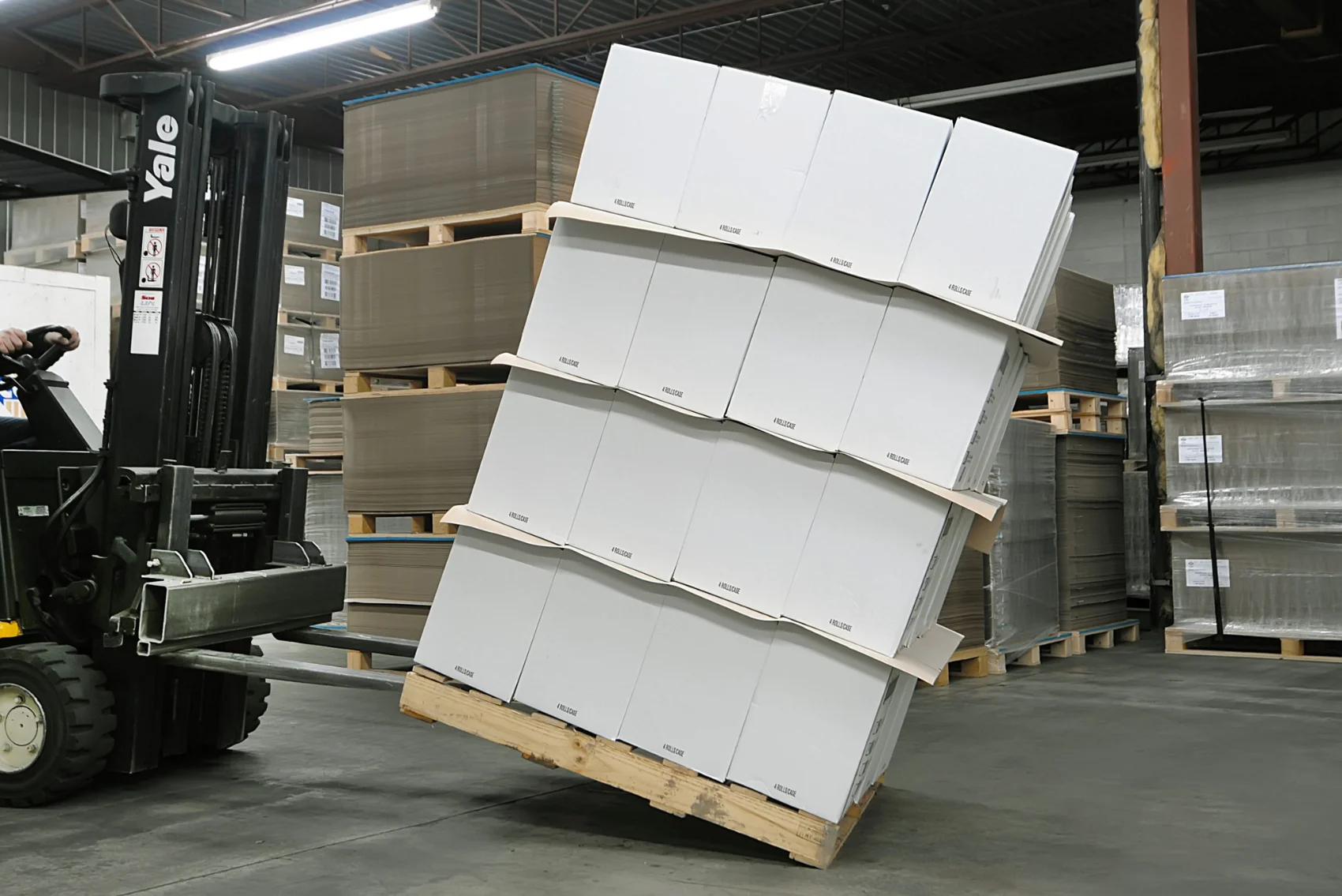In the realm of logistics and material handling, efficiency is the key to success. As businesses strive to streamline their operations, innovative solutions like slip sheets have gained prominence. A slip sheet is a thin, flat piece of material, usually made of paperboard or plastic, used as a pallet alternative for transporting and storing goods. In this article, we will delve into the concept of slip sheets, their types, benefits, and applications in various industries.
What is a Slip Sheet?
A slip sheet is a simple yet effective material handling tool designed to replace traditional wooden or plastic pallets. Unlike pallets, slip sheets are flat and have a smooth surface. They come in various sizes and materials, with common dimensions ranging from 40 x 48 inches to 48 x 48 inches. The primary function of a slip sheet is to provide a stable base for stacking and transporting goods within a supply chain.
Types of Slip Sheets:
- Fiberboard Slip Sheets:
Fiberboard slip sheets, also known as paperboard slip sheets, are made from layered and compressed paper pulp. These sheets are lightweight yet sturdy, providing a cost-effective alternative to traditional pallets. They are often used in industries where weight reduction is critical.
- Plastic Slip Sheets:
Plastic slip sheets are manufactured from high-density polyethylene (HDPE) or polypropylene. These sheets offer durability and resistance to moisture, making them suitable for various applications, including the food and pharmaceutical industries. Plastic slip sheets are reusable and can withstand harsh environmental conditions.
- Corrugated Slip Sheets:
Corrugated slip sheets are constructed from corrugated cardboard, providing strength and rigidity. These sheets are commonly used in industries where load stability and protection are paramount. Corrugated slip sheets are also preferred for their eco-friendly nature as they are recyclable.
Benefits of Slip Sheets:
- Space and Weight Efficiency:
Slip sheets contribute to space and weight efficiency in the transportation and storage of goods. Their flat design allows for more items to be stacked together, optimizing the use of available space. Additionally, slip sheets are lighter than traditional pallets, reducing overall shipment weight and associated transportation costs.
- Cost-Effective:
Slip sheets are often more cost-effective than traditional pallets. Their lightweight construction not only lowers transportation costs but also reduces packaging expenses. Moreover, slip sheets are typically less expensive to produce than wooden or plastic pallets, contributing to overall cost savings in the supply chain.
- Environmental Sustainability:
Many slip sheets are recyclable, contributing to environmental sustainability. For instance, plastic slip sheets can be recycled after use, reducing the environmental impact associated with traditional pallet disposal. Additionally, the use of slip sheets may result in less waste generation compared to pallets.
- Improved Handling Efficiency:
Slip sheets facilitate smooth and efficient material handling processes. Their flat surface allows for easy sliding of goods during loading and unloading operations, reducing the time and effort required for manual handling. This efficiency is particularly beneficial in high-volume distribution centers and warehouses.
Applications of Slip Sheets:
- Automotive Industry:
The automotive industry frequently adopts slip sheets for transporting automotive components and parts. The lightweight and space-efficient nature of slip sheets make them ideal for optimizing supply chain processes in this sector.
- Food and Beverage Industry:
In the food and beverage industry, where hygiene and cleanliness are paramount, plastic slip sheets are often preferred. They provide a clean and moisture-resistant surface for transporting packaged food items, ensuring the integrity of the products.
- Retail Distribution:
Retailers utilize slip sheets for the distribution of goods to stores. The ability to maximize space and minimize weight allows retailers to optimize storage capacities and reduce transportation costs, contributing to more efficient supply chain operations.
- E-commerce Fulfillment Centers:
E-commerce companies dealing with a high volume of small-sized packages benefit from the use of slip sheets. The streamlined handling and storage of goods help improve order fulfillment processes, ensuring timely deliveries to customers.
Conclusion:
In conclusion, slip sheets have emerged as a versatile and cost-effective solution in the world of logistics and material handling. Their ability to optimize space, reduce weight, and enhance handling efficiency makes them a valuable asset in various industries. As businesses continue to seek ways to improve their supply chain operations, slip sheets are likely to play an increasingly significant role in shaping the future of logistics.
